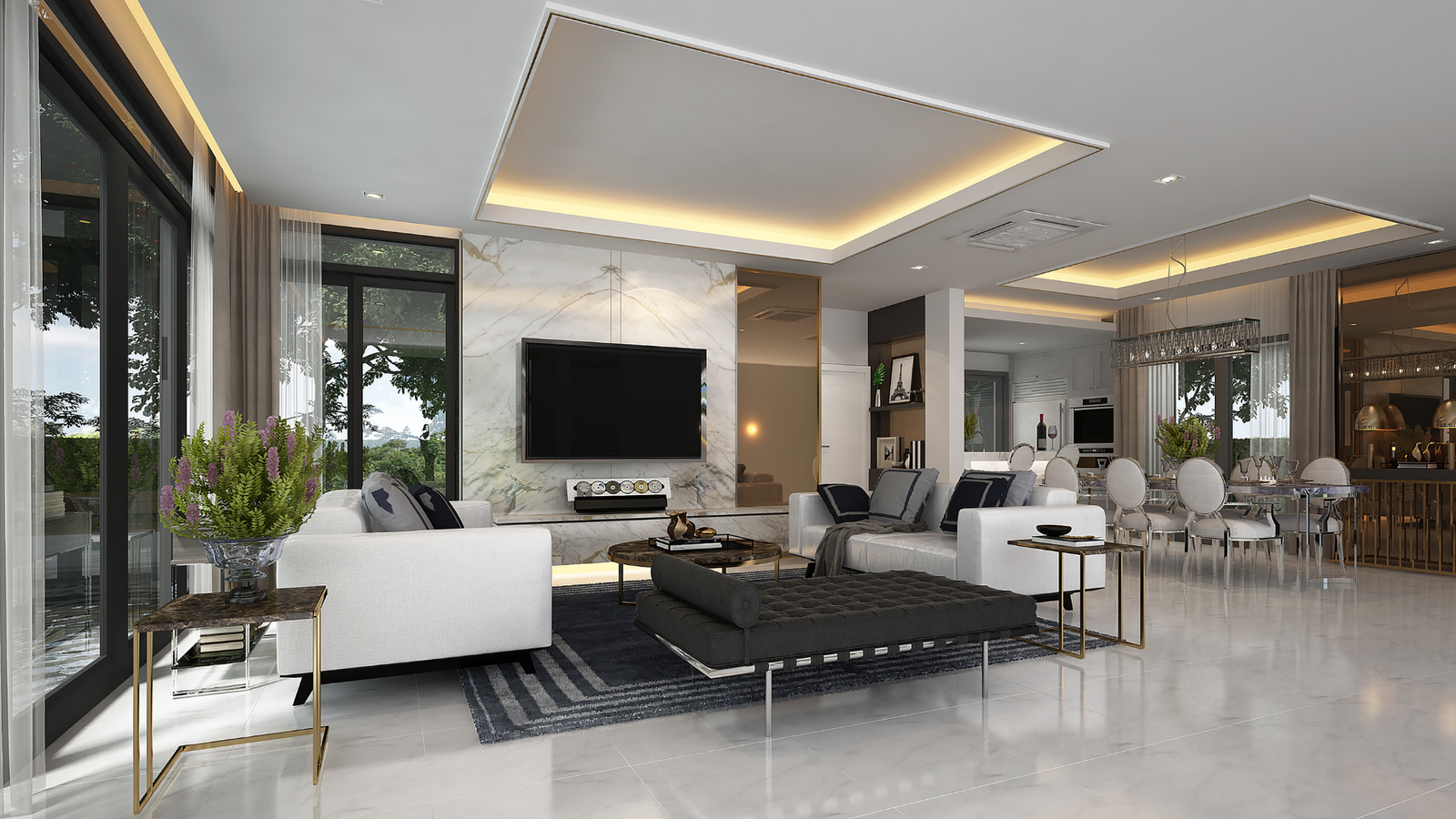How Room Size and Height Affect Your False Ceiling Choice
False ceilings are not just decorative features—they play an important role in the look, feel, and function of your space. From hiding wires and lighting fixtures to improving acoustics and insulation, they do it all. But here’s the secret: the size and height of your room play a big role in deciding the right false ceiling design.
At D2M Interior, we help homeowners create smart and stylish spaces. So, if you’re planning to install a false ceiling in your home or office, here’s everything you need to know about how your room’s dimensions affect the best choice.
Why Room Size and Height Matter
Before you pick a false ceiling design, it’s important to understand how space behaves. In design, proportion is everything. A ceiling that looks amazing in a large hall may look overwhelming in a small bedroom. A multi-layered design that works well in a high-ceiling room might make a low-ceiling room feel cramped.
So, how do you find the right balance? Let’s break it down.
1. Small Rooms: Keep It Simple and Subtle
Small rooms—like compact bedrooms, study rooms, or small kitchens—need false ceilings that enhance the space rather than shrink it visually. Here’s how:
What works:
Simple single-layer gypsum ceilings
Flat or shallow recessed designs
Light colours to reflect more light
Minimal lighting fixtures (like spotlights or LED strips)
What to avoid:
Heavy or multiple layers
Dark colours or heavy textures
Large hanging elements like chandeliers
Why:
False ceilings take up a few inches of height. In small rooms, that space is precious. Overly decorative ceilings can make the space feel tighter.
D2M Tip: Use edge lighting or mirror-finish panels to make small rooms look more open and modern.
2. Large Rooms: Get Creative with Design
In spacious rooms like living rooms, master bedrooms, or dining areas, you have more flexibility. These rooms can handle more elaborate designs and bolder patterns.
What works:
Layered or tray ceilings
Cove lighting and hidden LED strips
Decorative elements like wooden panels or POP mouldings
Geometric patterns or colour contrasts
What to avoid:
Keeping it too plain—might look empty or flat
Low-hanging fixtures in already tall rooms without proper spacing
Why:
Large rooms benefit from false ceilings that break up the emptiness and add visual structure. Multiple lighting zones can also help divide spaces (e.g., TV area vs. dining).
D2M Tip: Add a wooden beam or a panel design to bring warmth into large open areas.
3. Low Ceiling Height: Maximise Vertical Space
In homes where the ceiling is already low (usually less than 9 feet), false ceilings need to be handled with care.
What works:
Slim, single-layer gypsum ceilings
Border-only false ceilings
Mirror or reflective surfaces on the ceiling
Recessed or flat lighting options
What to avoid:
Multi-layered false ceilings
Bold patterns or textures on the ceiling
Hanging lights or ceiling fans that drop down too much
Why:
Low ceilings can make a room feel boxed in. You don’t want to lose more headroom with a bulky ceiling. The aim here is to enhance the perception of height.
D2M Tip: Use vertical wall panels or tall furniture to draw the eye upward—this helps your false ceiling feel higher than it is.
Check out our blog, The Ultimate Checklist for Your Home Renovation
4. High Ceiling Height: Add Depth and Comfort
High ceilings (10 feet or more) are a luxury—but they can also make a room feel cold or empty. False ceilings here can be used to bring warmth, proportion, and character to the room.
What works:
Multi-layered or tray ceilings
False ceilings with carved or layered designs
Dropped sections with pendant or chandelier lighting
Wood and textured finishes for visual weight
What to avoid:
Keeping the ceiling too plain—it may look unfinished
Using only upward lighting (can look dull in tall rooms)
Why:
Tall ceilings can make conversation spaces feel disconnected. Lowering parts of the ceiling helps anchor furniture arrangements and improve acoustics too.
D2M Tip: Add mood lighting in different layers for cozy evenings and stylish ambiance.
5. Room Function Also Matters
Along with size and height, think about the purpose of the room. A false ceiling should match not only the dimensions but also how you use the space. If you’re unsure where to begin, an experienced interior design in Pallikaranai—like the team at D2M Interior—can help you choose the most functional and stylish design for each room.
Living Room:
Go for decorative elements and lighting to highlight the entertainment area. Add a centre panel or floating ceiling design for focus.
Bedroom:
Prefer calming, softer lighting with minimal design. Cove lighting or dimmable spotlights work best.
Kitchen:
Opt for moisture-resistant materials and flat designs. Easy to clean and maintain.
Bathroom:
Use PVC or aluminium panels for water resistance. Stick to compact lighting and minimal drop from the actual ceiling.
6. Lighting: Plan It Alongside Your False Ceiling
Your ceiling design decides your lighting layout—and vice versa. The wrong lighting in a small room with a low ceiling can spoil everything. Some quick lighting tips:
Low ceilings: Use flush-mount lights or embedded LED strips.
High ceilings: Mix recessed lights with pendant lights.
Large rooms: Layer your lighting—ambient, task, and accent.
Small rooms: Keep lighting simple and close to the ceiling.
D2M Tip: Plan wiring and light fixture placement before the false ceiling installation starts. That saves time and prevents errors.
7. Materials Based on Room Size
The material you choose for your false ceiling also depends on the room’s size and conditions:
| Room Size | Best Material Options | Why |
|---|---|---|
| Small | Gypsum, PVC panels | Lightweight, easy to shape |
| Large | Gypsum + Wood/POP accents | Strong design impact |
| Moist Rooms (bathroom, kitchen) | PVC or metal ceiling | Water-resistant |
| Luxury Rooms | Wooden panels, fabric panels | Premium look |
8. Using False Ceiling to Hide Imperfections or Utilities
In rooms where wiring, ductwork, or old beams are visible, false ceilings offer a neat way to hide flaws. But remember:
In low rooms, conceal only where necessary—don’t drop the whole ceiling.
In high rooms, you can fully cover with a stylish layer and still maintain decent height.
Conclusion
False ceilings can transform your interiors—but the right design depends on room size, ceiling height, and purpose. The goal is not just to beautify the space but also to improve comfort, lighting, and proportion.
At D2M Interior, we combine functionality and creativity. Whether you’re working with a cozy apartment or a large villa, our team helps you find the perfect ceiling solution for every room.




